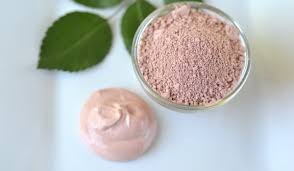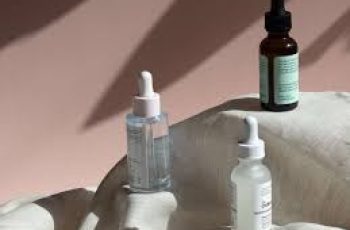
What is the difference between Australian pink clay and French pink clay?
Clay masks, the only product you can’t live without for a spa night at home! Using clay masks is a form of pampering that actually dates back centuries.
In ancient Egypt between 80 BC and 400 BC, Queen Cleopatra created a mask using white clay, milk, honey, and olive oil. She applied it all over her body to restore the youthfulness and glow of her skin. As the modern century progresses, our love for these masks has not diminished, although today we mostly wear them on our faces.
In 2017, the use of clay masks, especially pink clay masks, became popular. But these millennial favorites are more than just Instagram-worthy. The benefits of pink clay are particularly impressive, and every skin type can use it without any problems.
Compared to other clay masks that can be very drying for sensitive skin, pink clay is gentler and softens clogged pores instead of removing dirt like other masks. Pink clay deeply cleanses the skin without affecting the skin’s natural oils.
What is pink clay?
Pink clay is a type of clay called kaolin. Kaolin is usually white and takes on a pink hue depending on the iron oxide content. The higher the content, the darker the color of the kaolin.
In addition, the clay becomes more absorbent. Kaolin comes in different colors, from red to white. Red is perfect for oily skin types, and white can be mixed into many mask formulas to provide a calming effect. Pink is somewhere in the middle, providing deep pore cleansing while keeping the skin balanced and comfortable.
Skincare Benefits of Pink Clay. Pink clay is suitable for all skin types, especially sensitive and dry skin. Rich in minerals, it locks in moisture and removes impurities. It helps the skin restore and regenerate while gently exfoliating and revealing a radiant complexion with its slightly grainy texture.
For dry and sensitive skin, pink clay can inhibit irritation and inflammation while promoting healthy cell turnover to avoid causing skin problems such as dry, flaky patches on the skin, giving you a visibly brighter, smoother appearance.
Another reason pink clay is great for dry skin is that the clay doesn’t strip the skin of its natural oils, keeping it balanced and comfortable.
Even dehydrated skin will find pink clay plumping, brightening, and retaining moisture, which can be a difficult task in cold temperatures. Luckily, pink clay protects the outer layer of the skin from environmental aggressors like weather and pollution.
Using pink clay on oily skin can make a big difference. Don’t be fooled by the mildness of this clay for sensitive skin, it’s actually gentle yet effective. For congested, acne-prone skin, it tightens pores and reduces blackheads and zits without any signs of aggravation that could lead to further breakouts.
With toxic air and pollution at their highest levels since 2010, use a pink clay mask at least once a week to keep your skin as healthy as possible. This explains why the use of detoxifying masks has doubled.
We all know about blackheads, pimples or enlarged pores, and we can easily combat these issues with a 10-minute clay mask that deeply and thoroughly cleanses you and your pores of dirt, grime, oil and even makeup residue. You have your
cleaner gone! Once all the gunk is gone, you will notice that your face structure is smoother, impurities are removed and your skin is rejuvenated.
Often, masks and treatments used to combat acne and pimples are too harsh on the skin, stripping it of every last drop of oil to achieve that ‘squeaky clean’ feeling that people crave. This causes the skin to become even and
produce excess oil, which over time can lead to, yes, you guessed it, stains and breakouts.
By taking a gentler, yet more effective approach, your skin’s natural barrier, pH and sebum production will remain undisturbed and as healthy as possible.
As the title of this article suggests, there are different types of pink clay. In the next section, I will take the time to explain the difference between Australian pink and French pink.
What’s the difference?
As the names suggest, both clays are harvested in different regions. Geographically, this means they contain different minerals and may have slightly different effects on the skin.
French Pink. The minerals contained in pink clay are iron, illite, montmorillonite, and calcite. Illite is great for acne-prone skin because it opens and cleanses the pores. Blood circulation is also stimulated, making the skin appear tighter and younger. Montmorillonite is super absorbent and gently removes excess oil from the skin without completely removing it.
Finally, there is calcite, a crystal that is great for energy cleansing, which I believe is what is in the pampering clay mask. It draws out toxins, gently exfoliates, and removes dead skin cells that make the skin appear dull. Blood circulation is stimulated and the skin is rejuvenated.
French pink clay from the south of France has been used exclusively in luxurious treatments in spas for years, which explains why Australian pink clay is more often found in home skincare products, but more and more brands are choosing French pink clay. Starting with French pink clay, its popularity has grown.
Australian pink clay. Australian pink clay contains an entirely different set of minerals: silica, magnesium, selenium, and zinc. Silica is a natural anti-inflammatory compound that locks in moisture, which explains why pink clay is great for dry and eczema-prone skin types.
Magnesium helps the skin retain its natural fatty acids, which are great for keeping the face youthful and plump. Selenium is a great antioxidant that neutralizes harmful free radicals that damage the skin’s natural barrier. Finally, zinc has a wonderful healing effect on the skin and any blemishes will be treated and become less noticeable, which makes pink clay a great skincare treatment for mature skin as well.
Originated from a specific region of Australia, this clay is rich in plant extracts and minerals that work together to tighten pores, detoxify blemished skin and remove impurities. Due to the purity of the clay, it is soft, yet oil-resistant and light-resistant.
French or Australian pink clay is rich in minerals and anti-free radical extracts to ensure that our skin is taken care of in the best possible way. With all the aggressors we face every day, using this millennial pink product will help your skin heal back to its healthiest state and give her luxurious pampering!
Don’t miss our YouTube channel for more skincare tips and expert advice! Click the “Subscribe” button to join us on the green sofa. You won’t regret it!


